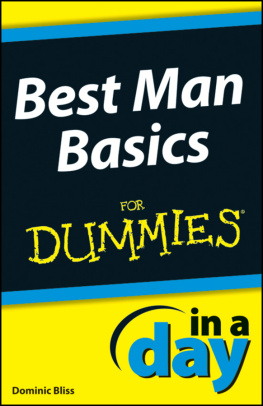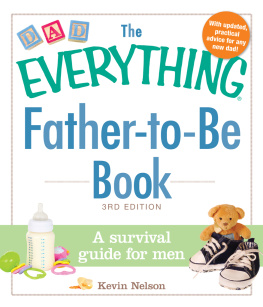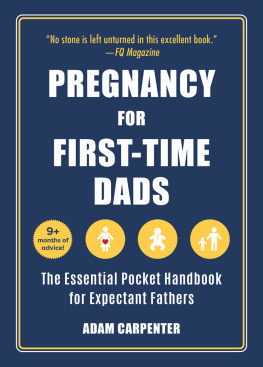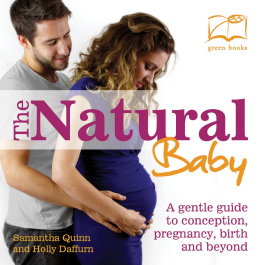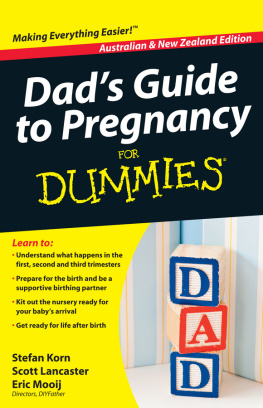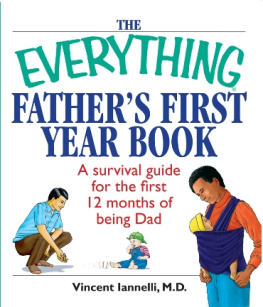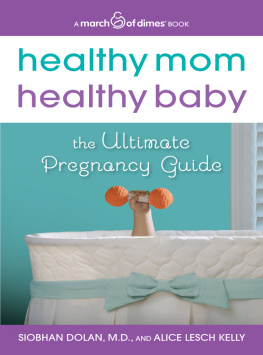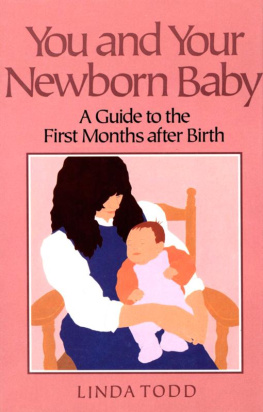
A Mans Guide
To Having A Baby
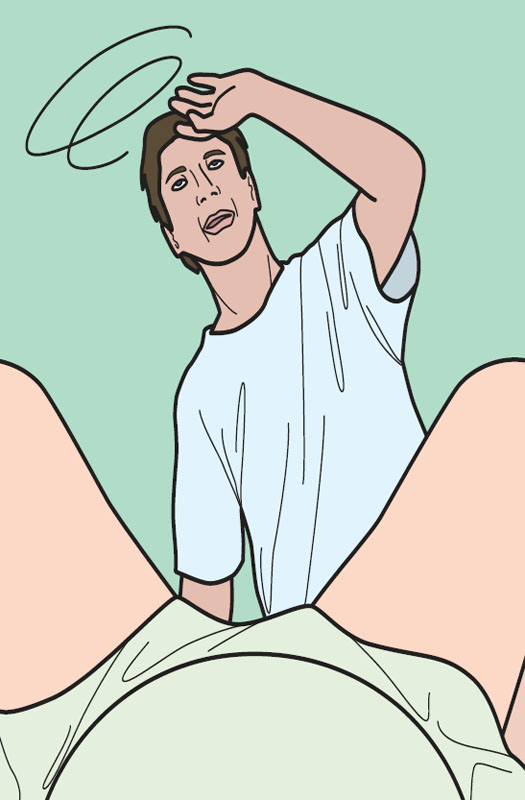
A Mans Guide
To Having A Baby
Everything a new dad needs to know to care for a newborn
Dominic Bliss

Published in 2013 by Dog 'n' Bone Books
An imprint of Ryland Peters & Small Ltd
2021 Jockeys Fields519 Broadway, 5th Floor
London WC1R 4BW New York, NY 10012
www.rylandpeters.com
10 9 8 7 6 5 4 3 2 1
Text Dominic Bliss 2013
Design and illustration Dog 'n' Bone Books 2013
The authors moral rights have been asserted. All rights reserved. No part of this publication may be reproduced, stored in a retrieval system, or transmitted in any form or by any means, electronic, mechanical, photocopying, or otherwise, without the prior permission of the publisher.
A CIP catalog record for this book is available from the Library of Congress and the British Library.
ISBN: 978 1 909313 13 2
eISBN: 978 1 911026 56 3
Printed in China
Editor: Marion Paull
Design concept: Geoff Borin
Spread design: Emma Forge
Illustration: Kuo Kang Chen
For digital editions, visit
www.cicobooks.com/apps.php
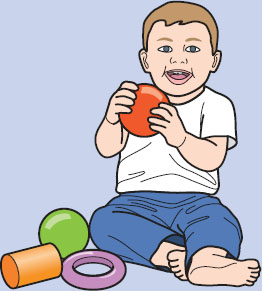
Contents
CONGRATULATIONS
So, your partners pregnant. Youve probably already completed your headless-chicken panicky run around the living room and, right now, you need some no-nonsense advice on how to be a thoroughly responsible dad.
Well, youve come to the right place. This book will give you all the practical advice you need to survive pregnancy (remember, youre pregnant, too), childbirth, and the first year of your babys life.
Nowadays, modern dads are more involved in pregnancy and birth than ever before in human history. Its a role you should relish. Some of it will be straightforward and involve common sense; some of it will be fun; and some of it will be downright scary. But at no time will it be boring. Pregnancy and fatherhood are all part of lifes rich pageant.
In this book, I concentrate on the factors that will most affect you, as a father. These include the essentials you need to know about whats happening to your partners body and the baby inside her, but we will skim over the exclusively female aspects of pregnancy. Besides, there are countless books aimed at mothers that cover that kind of stuffso, not so much about food cravings and sore nipples, but lots on catching the baby, changing diapers, and buying a stroller.
Throughout the book I use the term partner to refer to the woman whos carrying your baby. Its not the ideal term, I know. She may be your wife, your girlfriend, or even a one-night stand that got a little too amorous. Partner is simply a catch-all description.
Also, a quick note on the use of pronouns may be helpful. When I say he, Im referring to your baby; when I say she, I mean your partner. This avoids confusion and makes sense since no women should be reading this book. Of course, theres a good chance you dont yet know the sex of your future offspring. If he turns out to be a she, I apologize in advance.
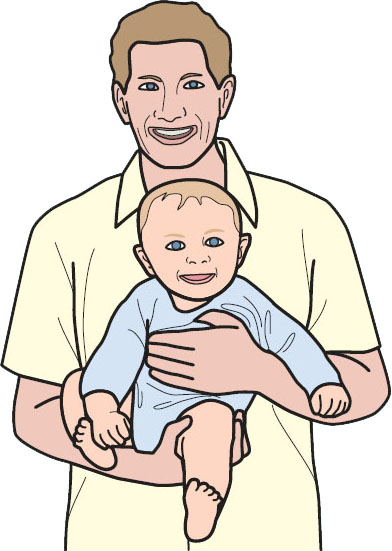
No more baby jargon!
Trimesters and Braxton Hicks? Come again? When a bunch of pregnant women gets together to talk about babies, dads get decidedly uneasy. It can sound like theyre all speaking a foreign language. Things get even more confusing once medical staff and hospitals wade in. Take control of all that jargon and find out what the hell theyre jabbering on about. Welcome to the idiots guide to technical terms used in pregnancy and baby care.
A to Z of baby jargon
A
Amniocentesis: The extraction of amniotic fluid to test for genetic abnormalities.
Amniotic fluid: The fluid that surrounds the baby and protects him while hes in the womb.
B
Babinski reflex: Stroking the babys foot causes the big toe to rise and the other toes to fan out.
Baby blues: A mild depression that many women feel in the days after giving birth.
Blastocyst: The ball of cells that later develops into the embryo.
Braxton Hicks contractions: Contractions that occur a little while before childbirth as the uterus gets ready for the real thing.
C
Cervix: The lower, narrow end of the uterus where it joins with the top of the vagina.
CNM: A certified nurse-midwife.
Contraction: A tightening of the uterus, which thins and dilates the mothers cervix.
Couvade syndrome: A condition in which the father feels physical symptoms of pregnancy.
Cradle cap: A crusty skin rash that appears on the babys scalp.
C-section or cesarean: The surgical procedure used to deliver a baby through the mothers abdomen.
D
Doula: A maternity nurse, not necessarily trained.
Downs syndrome: A chromosomal condition resulting in birth defects.
E
Ectopic pregnancy: The embryo implants outside the uterus.
Endometrium: The lining of the uterus.
Epidural: Pain relief injected into the mothers lower back during childbirth.
F
Forceps delivery: The gentle use of two tongs to pull the babys head out of the mothers vagina while she pushes.
G
Gestational diabetes: A form of diabetes that some women develop during pregnancy.
Gestational hypertension:
When a woman develops high blood pressure after 20 weeks of pregnancy.
H
Hypnobirthing:
Hypnotherapy to ease childbirth.
I
IVF: In vitro fertilization, when the egg is fertilized by sperm outside of the womans body.
M
Mastitis: An infection of the mothers breast.
Meconium: The greenish-black first poo that a baby produces after birth.
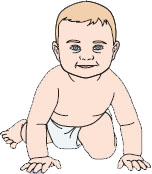
Meningitis: Inflammation of the membranes covering the brain and spinal cord.
Midwife: The healthcare professional who supports the mother during birth.
Miscarriage: When a woman loses the baby during the first 20 weeks of pregnancy.
Mongolian spot: Black or blue marks on a newborn babys legs or bottom.
O
OB/GYN:
Obstetrician/gynecologist, medical professionals trained in womens reproduction.
Oligohydramnios: A condition in which there is too little amniotic fluid in the uterus.
Ovulation: The phase in a womans menstrual cycle when a mature egg is available to be fertilized.
P
Pertussis: See Whooping cough, .
Pica: A disorder that causes pregnant women to eat unusual substances, such as coal or starch.
Placenta: The organ that connects the fetus to the wall of the uterus and provides life support.
Next page

